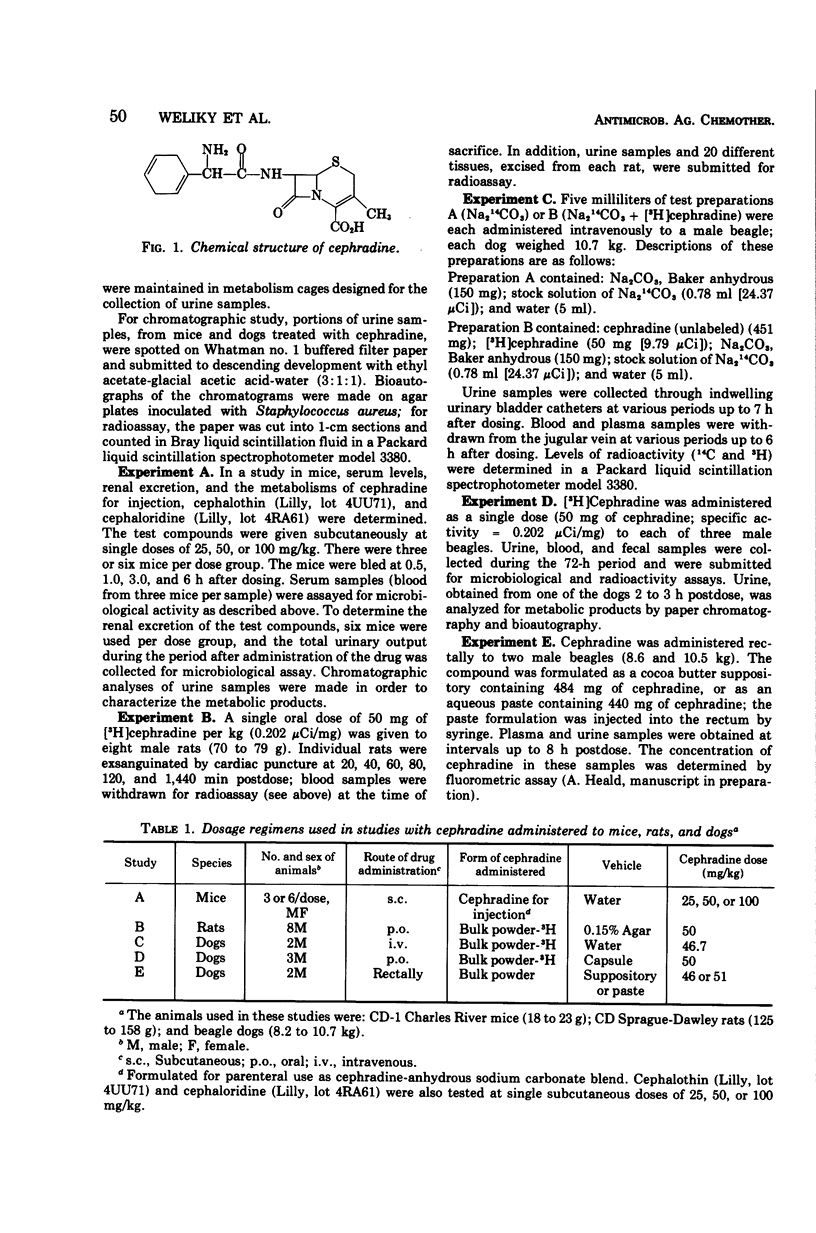Abstract
Metabolic studies were conducted with cephradine administred by the oral, subcutaneous, intravenous, or rectal routes to mice, rats, and dogs. Peak blood levels were usually attained in 30 to 150 min after dosing, depending on the animal species studied. Based on urinary excretion, cephradine appeared to be well absorbed after oral or subcutaneous administration; after rectal doses, cephradine was absorbed poorly. In rats and dogs given oral or intravenous doses of cephradine, about 70 to 100% of the administered dose was recovered during a 24-h collection period. Cephradine was excreted unchanged. After the oral or intravenous administration of [3H]cephradine to rats and dogs, respectively, its plasma half-life was about 1 h. After oral administration to rats, cephradine was distributed widely throughout the body tissues, with the greatest concentrations in the kidneys and liver; at 45 min to 6 h postdose, cephradine concentrations in the kidneys and liver were about 8 and 3 times higher, respectively, than those in plasma.
Full text
PDF





Selected References
These references are in PubMed. This may not be the complete list of references from this article.
- Dolfini J. E., Applegate H. E., Bach G., Basch H., Bernstein J., Schwartz J., Weisenborn F. L. A new class of semisynthetic penicillins and cephalosporins derived from D-2-(1,4-cyclohexadienyl)glycine. J Med Chem. 1971 Feb;14(2):117–119. doi: 10.1021/jm00284a008. [DOI] [PubMed] [Google Scholar]
- Hassert G. L., DeBaecke P. J., Kulesza J. S., Traina V. M., Sinha D. P., Bernal E. Toxicological, pathological, and teratological studies in animals with cephradine. Antimicrob Agents Chemother. 1973 Jun;3(6):682–685. doi: 10.1128/aac.3.6.682. [DOI] [PMC free article] [PubMed] [Google Scholar]
- Landa L. Cephradine in the treatment of intestinal infections caused by Shigella or Salmonella organisms. Curr Ther Res Clin Exp. 1972 Aug;14(8):496–502. [PubMed] [Google Scholar]
- Limson B. M., Siasoco R. E., Dial F. P. A new cephalosporin derivative, cephradine (TM) , in the treatment of acute infective diseases. Curr Ther Res Clin Exp. 1972 Mar;14(3):101–106. [PubMed] [Google Scholar]


